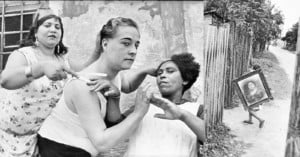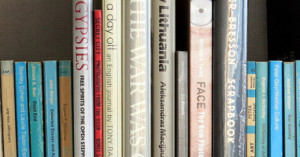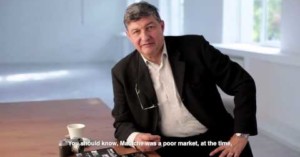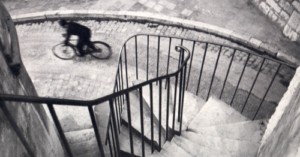
Photo Book of Henri Cartier-Bresson’s Life’s Work Now in Its 11th Edition
A new edition of Henri Cartier-Bresson's career retrospective photo book has been published in France, two decades after the great photographer's death.

A new edition of Henri Cartier-Bresson's career retrospective photo book has been published in France, two decades after the great photographer's death.

The photographic master Henri Cartier-Bresson made some key observations about photography, translated as “the decisive moment” which is often (incorrectly) characterized as: "capturing an event that is ephemeral and spontaneous, where the image represents the essence of the event itself."

Henri Cartier-Bresson is famously credited with the saying, "Your First 10,000 photos are your worst." Looking back at his first photos, photographer Gordon Laing tends to agree.

A large collection of Henri Cartier-Bresson's photographs will be offered at auction starting on December 9 and includes quite a few images that have never appeared at auction before.

Every Sunday, we bring together a collection of easy reading articles from analytical to how-to to photo-features in no particular order that did not make our regular daily coverage. Enjoy!

I love looking in detail at another photographer’s work. To immerse yourself in someone else’s creativity—to see what their ideas spark inside of you, what excites you, what makes you sit up and think 'Wow, that’s really cool!'—that’s all great fuel for your own photography.

A bible for photographers. That is how Robert Capa described The Decisive Moment by Henri Cartier-Bresson. After almost 70 years it was first published, this book has still a lot to say to photographers and especially to street and documentary photographers.

In this article, I am going to share a huge project in which Henri Cartier-Bresson’s black and white photos are reimagined into satirical paintings. What would Bresson see if he were still shooting today? The colorful paintings will definitely give you a glimpse!

What's up photography fans? It's Martin from All About Street Photography, and today I want to talk about Henri Cartier-Bresson's iconic photo of a cyclist, titled Hyères, France. I am going to take a closer look at the composition as well as at the story behind the photograph.

Here's a clip from an old interview in which legendary photographer and street photography pioneer Henri Cartier-Bresson was asked about the art of seeing. His answer probably isn't what you'd expect.

Ever wonder what it is that makes Henri Cartier-Bresson's "decisive moment" photos "work"? Photographer Tavis Leaf Glover put out a two-part video series in which he explores Cartier-Bresson's famous photos and shows how they conform to various ideas and principles of composition.

Painting and photography are often considered similar artistic expressions. Henri Cartier-Bresson was a painter before he became a photographer, and became a painter again in his retirement. While his artistic sense informed his photography in terms of his ability to see the world in constantly changing light and compositional potential, he never considered photography as art.

We tend to see photos in isolation. By that I don’t mean we only see one photo at a time -- between Facebook, Flickr, and Instagram, we’ve become comfortable consuming many photos at once -- but that we see only one photo from a scene.

A couple of months ago, we shared an interview with the photographer known as Weegee that was released in the 1958 vinyl record titled "Famous Photographers Tell How." On that same record is an interview with Henri Cartier-Bresson in which the legendary photojournalist shares his thoughts on what photography is, the way he approaches it, and various opinions on theory and technique.

Wow... Where do I even begin? I would say that “The Decisive Moment” by Henri Cartier-Bresson is one of the most beautiful photo books I have ever handled, and it is a book that brings me extreme joy and happiness (you can see all the photos from the book for free over at Magnum Photos).

Above is a full 50-minute documentary from 1998 about the life and work of Henri Cartier-Bresson, the legendary photographer who's considered to be the father of photojournalism. It's titled "Pen, Brush and Camera."

Online book marketplace AbeBooks -- probably the first link you'll see if you try to search for a rare, signed or early edition of your favorite novel or photo book -- has a list of the 10 most collectable photography books of all time. You can probably guess two or three of them, but do you think you know them all?

Henri Cartier-Bresson is a name forever engraved on the face of photographic history. Known for his humanist approach to photography and the world around him, the so-called father of street photography defined his photojournalistic style with each snap of the shutter.
And while his individual photographs are something to marvel at in their own right, one of the greatest contributions he ever gave the world was a book called The Decisive Moment, which you can now once more own without spending $500+ dollars.

“Your first 10,000 photographs are your worst.” – Henri Cartier-Bresson
This sage advice is from perhaps the most influential photographer and art philosopher in the history of photography. I see this quote at least once a week on social media, but I only recently began to mull it over in any great depth. Let’s use it as a talking point to discuss artistic development in photography.

The folks at 522 Productions have been slowly putting out videos that capture the essence of what inspires each of them. The charge was led a few weeks ago by 522's art director Chris Jurchak, but it was editor Eli Sinkus' What Inspires You? video, uploaded on April 1st, that caught our eyes and ears.
His video tells the tale of his love affair with photography and Henri Cartier-Bresson's famous "Decisive Moment" through the magic of (mostly) black and white film. A fictional tale of a boy discovering the world through photography, the entire video is then "narrated" by an interview Cartier-Bresson gave Cornell Capa in 1973.

Do a search for "Henri Cartier-Bresson" using Google's image search engine, and the photograph above is one of the results that pops up. Dig a little deeper into the results, and you'll learn that it's a photo by Cartier-Bresson showing French actress Isabelle Huppert.
Problem is, that's all wrong. The woman in the photo isn't Isabelle Huppert, and the photograph wasn't snapped by the father of modern photojournalism.

There are plenty of documentaries out there about famous photographers like Henri Cartier-Bresson; in Bresson's case there's even an hour-long interview we've featured. But while documentaries and interviews are informative and educational, there's nothing like a first hand account from a photog who actually had the chance to meet the legend. This video takes you back to May 1975, when Romanian photographer Andrei Pandele was fortunate enough to be Henri Cartier-Bresson's tour guide through Bucharest.

If you’re a fan of hearing from photography greats and have some free time, check out his awesome documentary …

A wonderful hour-long interview with Henri Cartier-Bresson.

Here's what Henri Cartier-Bresson, the father of modern photojournalism, said about his concept of "The Decisive Moment" in an interview with The Washington Post in 1957.

If you go to Google Street View and type in “rue de londres, …

Behind the Gare St. Lazare is one of French photographer Henri Cartier-Bresson‘s best …

Back in 2006, Flickr user André Rabelo submitted the above photograph to the group pool of DeleteMe!, a group whose members vote on photos to weed out any photos that aren't "incredible pictures, amazing, astonishing, perfect". Sadly, the photograph was very quickly removed by popular vote.

Here’s a terrific 20-minute video that features Henri Cartier-Bresson — the father of …